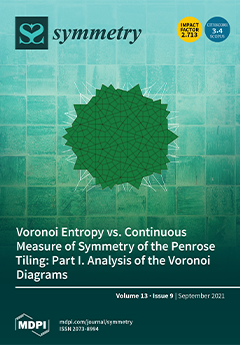Fenton and Fenton-like advanced oxidation processes (AOP) have been substantially utilized in wastewater treatment for the removal of organic contaminants. The present investigation explores the catalytic activity of cobalt dispersed over nanoporous silicate material (CoO/TUD-1), TUD-1, for the Fenton-type degradation of methylene blue
[...] Read more.
Fenton and Fenton-like advanced oxidation processes (AOP) have been substantially utilized in wastewater treatment for the removal of organic contaminants. The present investigation explores the catalytic activity of cobalt dispersed over nanoporous silicate material (CoO/TUD-1), TUD-1, for the Fenton-type degradation of methylene blue (MB) dye present in wastewater, with hydrogen peroxide (H
2O
2) as an oxidant. The catalyst, which was prepared using the hydrothermal method, was characterized using analytical and spectroscopic techniques, such as X-ray diffraction (XRD), N
2 adsorption–desorption isotherms, UV-visible diffuse reflectance (DR), scanning electron microscope (SEM), transmission electron microscopy (TEM) and Fourier transform infrared (FTIR). The results indicated that the CoO/TUD-1 possessed three-dimensional structures with a high surface area and a pore diameter capable of the uniform dispersion of cobalt species. Density functional theory (DFT) simulations were performed to study the most stable tetra coordinate adsorption configuration of a single Co atom on amorphous SiO
2. To understand the geometric and electronic structure of this configuration, electron density differences, Bader charge, and partial density of states were examined. The results obtained from the DFT calculations confirmed the occurrence of electron transfer from the Co atom to the amorphous SiO
2. The calculated adsorption energy was found to be −1.58 eV, which indicated that the MB dye was strongly adsorbed by parallel configuration mode and degraded more easily. Further, the addition of a 0.1g/L dose of the prepared CoO /TUD degraded the MB dye effectively (~95%) within 240 min of contact. Thus, CoO/TUD-1 is a potential material for the removal of organic contaminants and the degradation of dyes in wastewater treatment.
Full article





